CODIAEUM
Codiaeum
Rumph. ex A. Juss., Euphorb. Gen. Tent. 33, t.9, f. 30. 1824; Muell. Arg. in DC., Prodr. 15(2): 1116. 1866; Benth. & Hook. f., Gen. Pl. 3(1): 299. 1880; Hook. f., Fl. Brit. Ind. 5: 399. 1890; Pax in Engl., Pflanzenreich 4. 147. 3: 23. 1911; Bingtao & Gilbert, Fl. China @ eFlora.org 11: 267; Radcliffe-Smith, Fl. Pak. @ eFloras.org p. 74..
Shrubs or small trees, monoecious or occasionally dioecious. Indumentum, when present, simple; latex clear, non-toxic. Leaves alternate, petiolate; stipules minute, caducous, simple, lobed or sometimes obsolete; leaf blade sometimes recurved, twisted or interrupted, venation pinnate, usually eglandular. Inflorescence axillary or subterminal, long, unbranched, usually unisexual and shortly pedunculate laxly racemose; inflorescence sometimes subtended by a small orbicular leaf. Male bracts 1-6-flowered and female bracts 1-flowered. Male flowers: Pedicels slender, articulate. Sepals 3-6, free, imbricate. Petals (3-)5-6, minute or 0. Disc glands 5-15, small, free. Stamens 15-100, filaments free, anthers erect, extrorse, dorsifixed, connective broad, cells apically confluent. Pistillode 0. Female flowers: Pedicel shorter and stouter than in male flowers, not articulated. Sepals 5, free, smaller than in male flowers. Petals absent. Disc shallowly cupulte , +/- entire. Ovary 3-locular with ovule per loculus; styles 3, shortly connate at base, spreading or recurved, simple, rarely bifid. Fruit a capsule, septicidally dehiscent into 3 bivalved cocci. Seeds smooth, shiny, marbled, carunculate.
17 species
Codiaeum variegatum
Codiaeum variegatum
(L.) Rumph. ex A. Juss., Euphorb. Gen. 80, 111. 1824; Bingtao & Gilbert, Fl. China @ eFloras.org 11: 267; Croton variegatus L., Sp. Pl. 1199. 1753.
A much-branched shrub, up to 2.5 m tall, young branches puberulent, with prominent +/- circular leaf scars. Leaves alternate, petiolate, petioles 1-2.5 cm long; leaves green, yellow, purple in various patterns; leaf blade 7-19 cm x 3-9 cm, oblong, elliptic, ovate to obovate, leathery, brittle, veins yellow, green with yellow spots or blotches, shiny, glabrous, margin entire and wavy, base cuneate or obtuse, apex acute to acuminate. Stipules minute or absent. Inflorescence axillary or subterminal, long, unbranched, unisexual, pedunculate racemes. Male inflorescence 10-35 cm long, basal orbicular leaf 2 cm x 2 cm. Flowers bracteate, 1 or more male flowers per bract, bracts minute. Male flowers: Pedicels 1-2 cm long, delicate and articulated. Sepals 5, connate at base, lobes suborbicular, concave, ca. 4 mm x 3 mm, glabrous, greenish or yellowish white. Petals 5, free, smaller than sepals, ca. 1.5 mm x 2 mm, 3 or more lobed, white. Disc glands 5, turbinate, truncate, fluted. Stamens 20-30, filaments 3-4 mm long, anthers 1 mm x 1 mm, yellow, connective broad, thecae narrow. Female inflorescence up to 22 cm long including 8.5 cm long peduncle, 20-35 female flowers in racemose fashion; one flower per bract; bract ca. 1 mm long; bracteoles 0.5 mm long. Female flowers: Pedicel 3-4 mm long, stout. Sepals 5, connate, lobes ca. 1 mm x 1 mm, ovate- triangular. Petals absent. Disc annular below the ovary, ca. 1 mm diameter, secreting much nectar. Ovary ovoid-conical, ca. 1 mm x 1 mm, glabrous, 3-locular, 1 ovule per loculus on axile placentas; styles 3, connate at base, 3-4 mm long, simple, spreading and recurved, hairy on maturity.
Capsule subglobose, slightly flattened, glabrous, ca. 9 mm in diameter. Seeds ca. 6 mm. (Fruit not observed)
Common Names: Fire Croton, Garden Croton, Variegated Croton
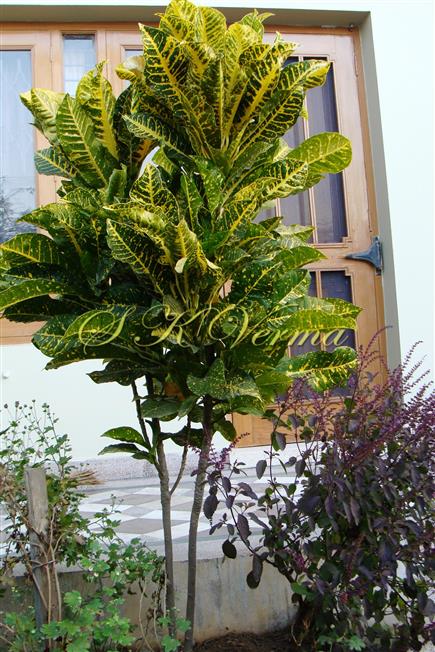
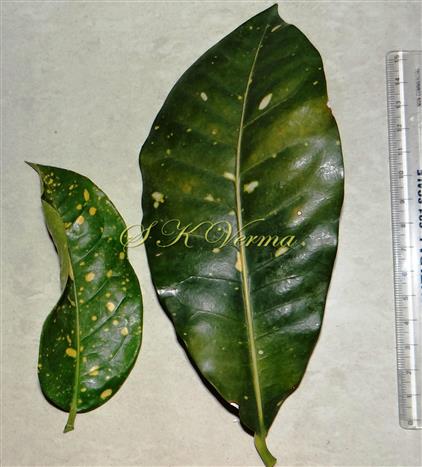


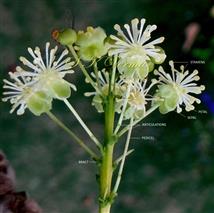
.jpg)
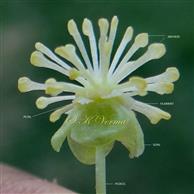
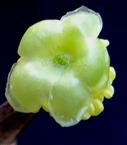

 with Calyx, Corolla and 5 disc glands-DSC04150.jpg)
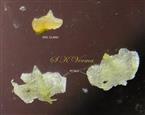
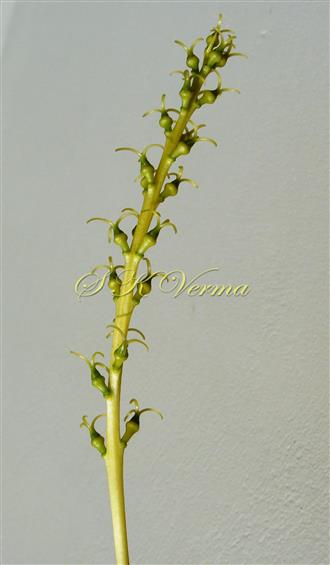
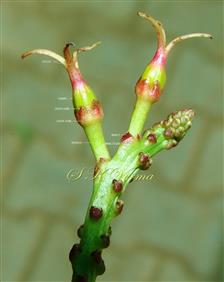




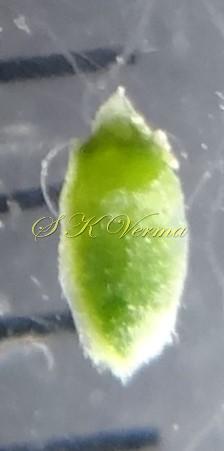

.jpg)


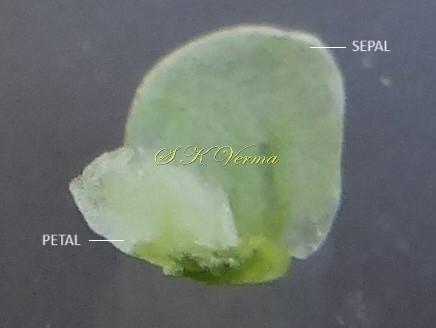
 with Calyx, Corolla and 5 disc glands-DSC04150.jpg)


